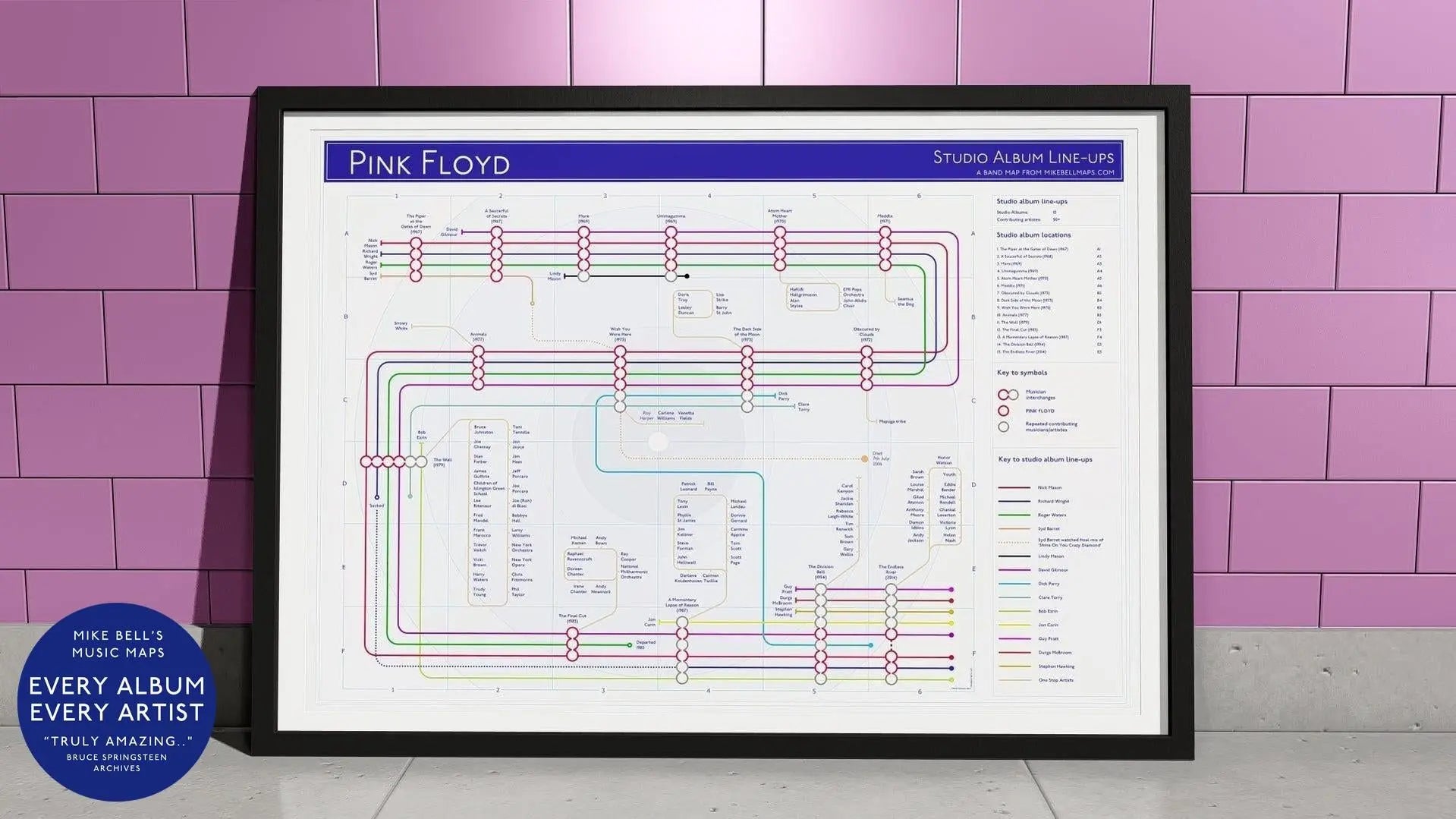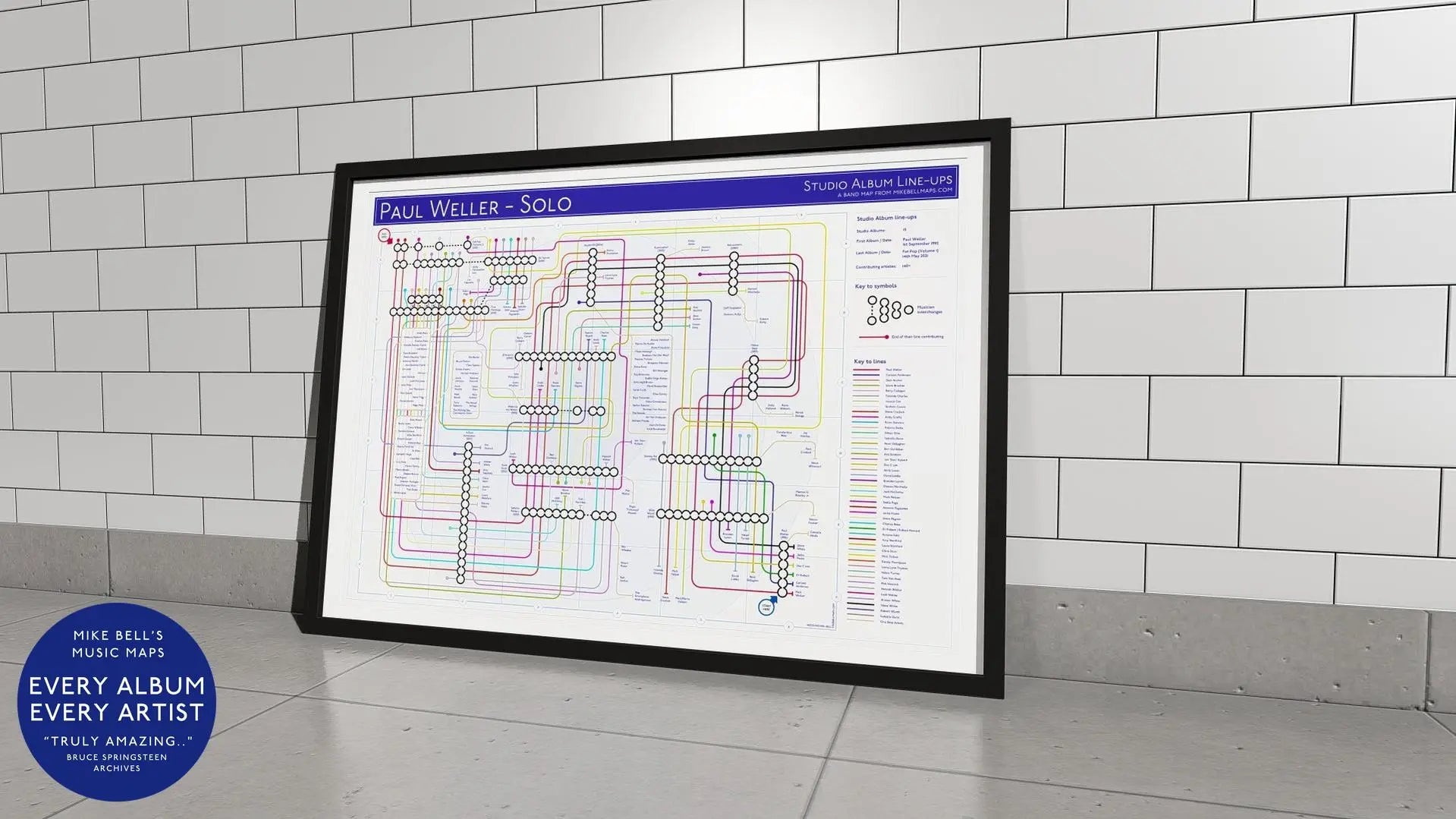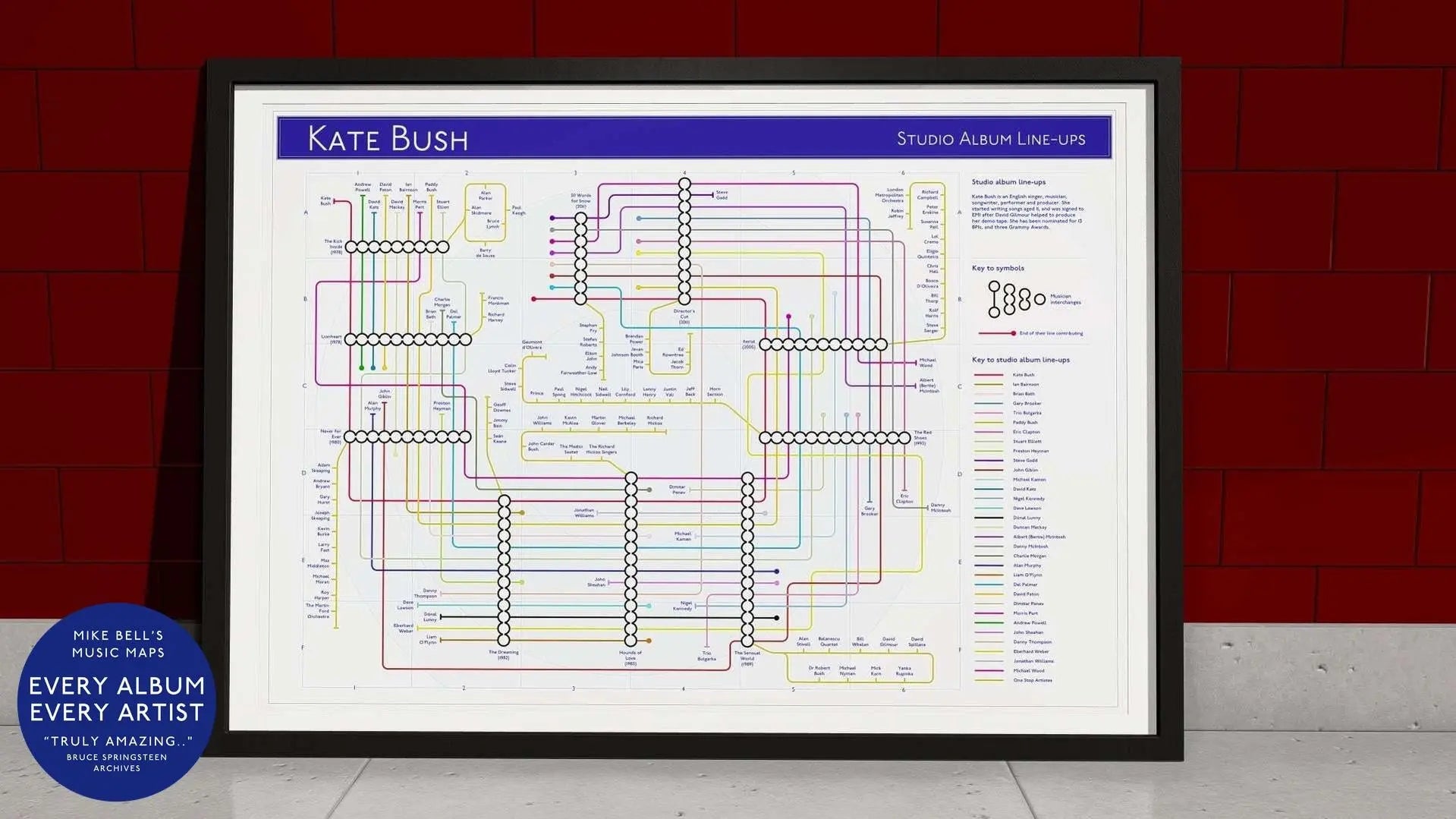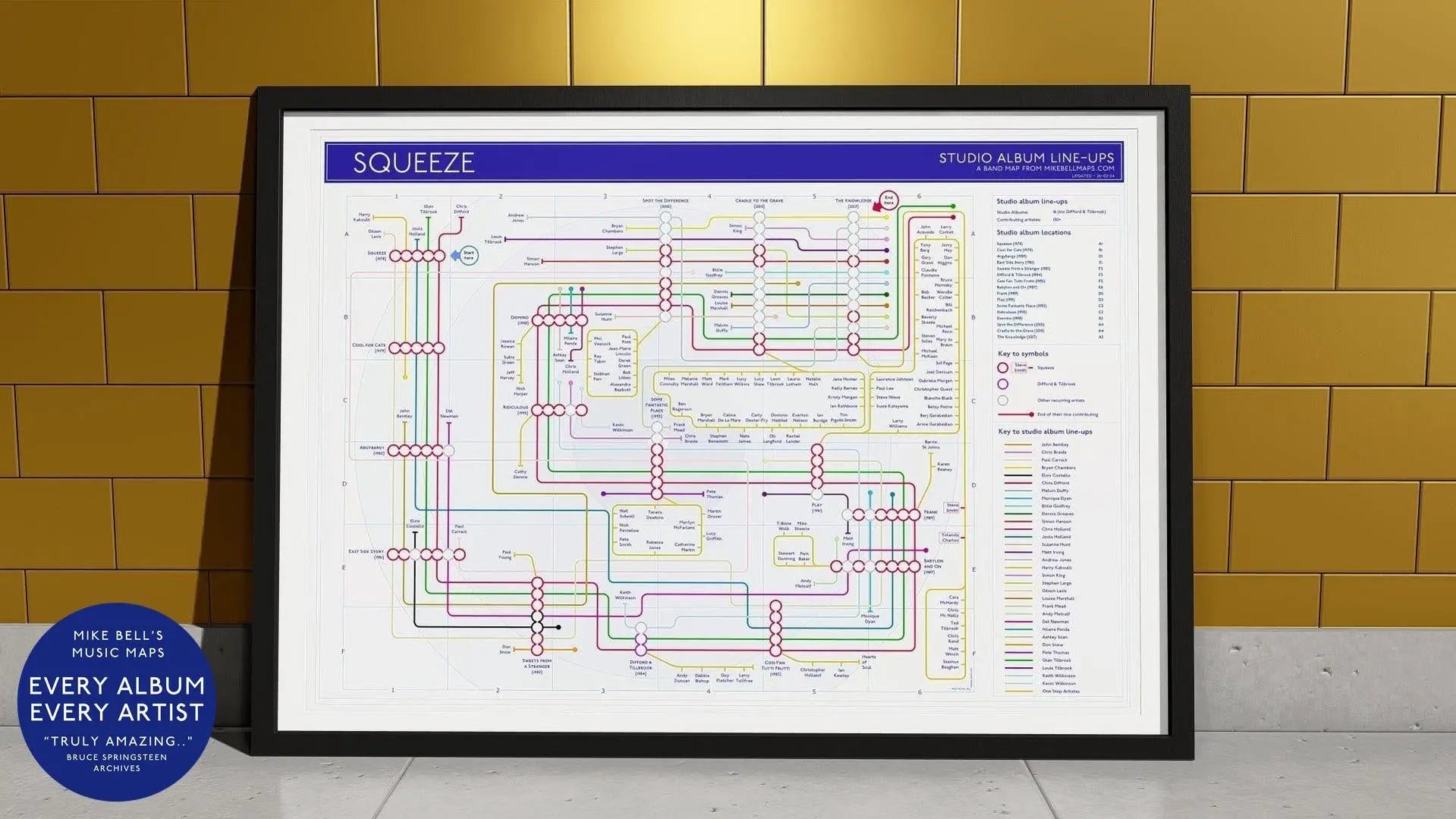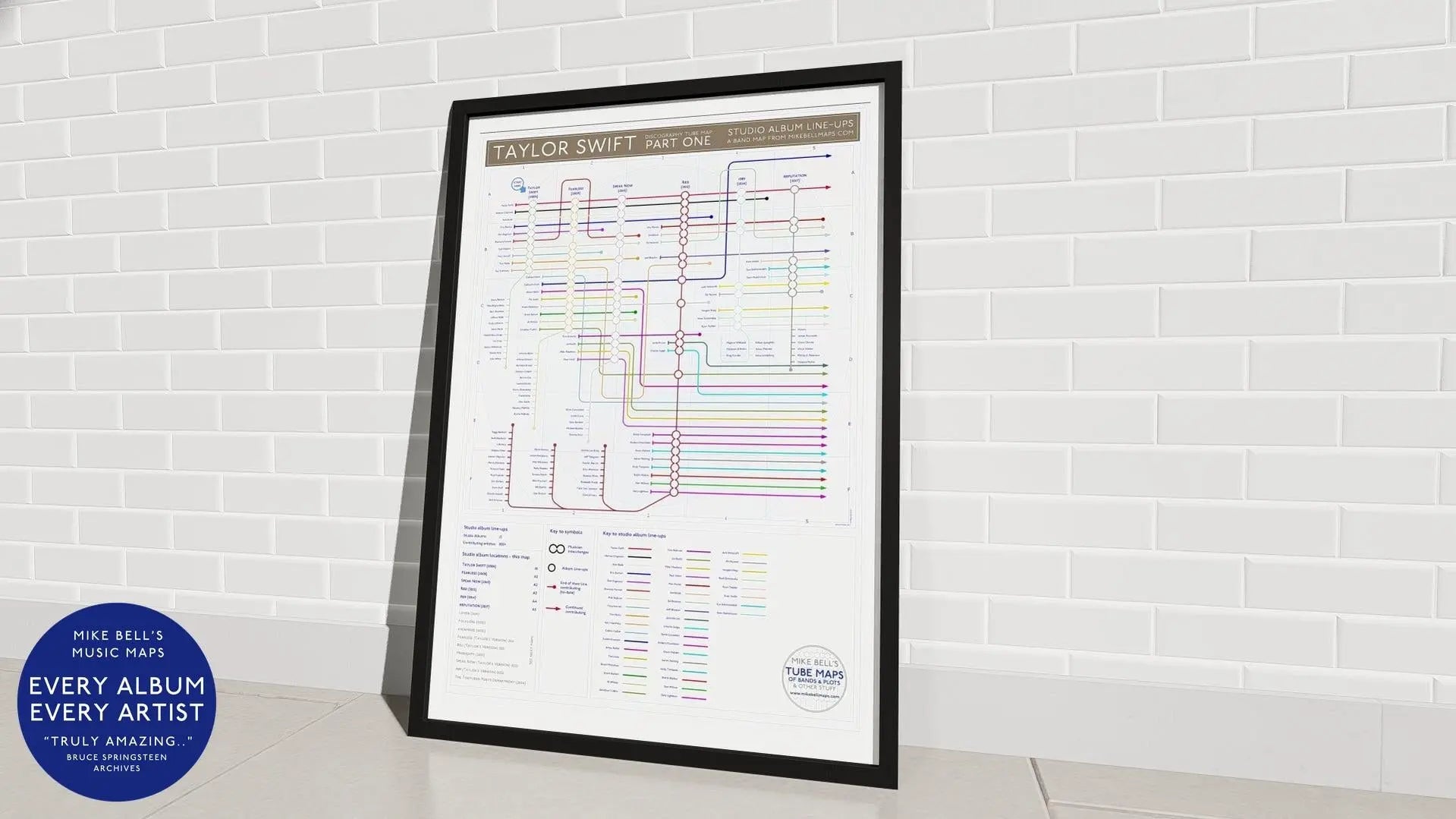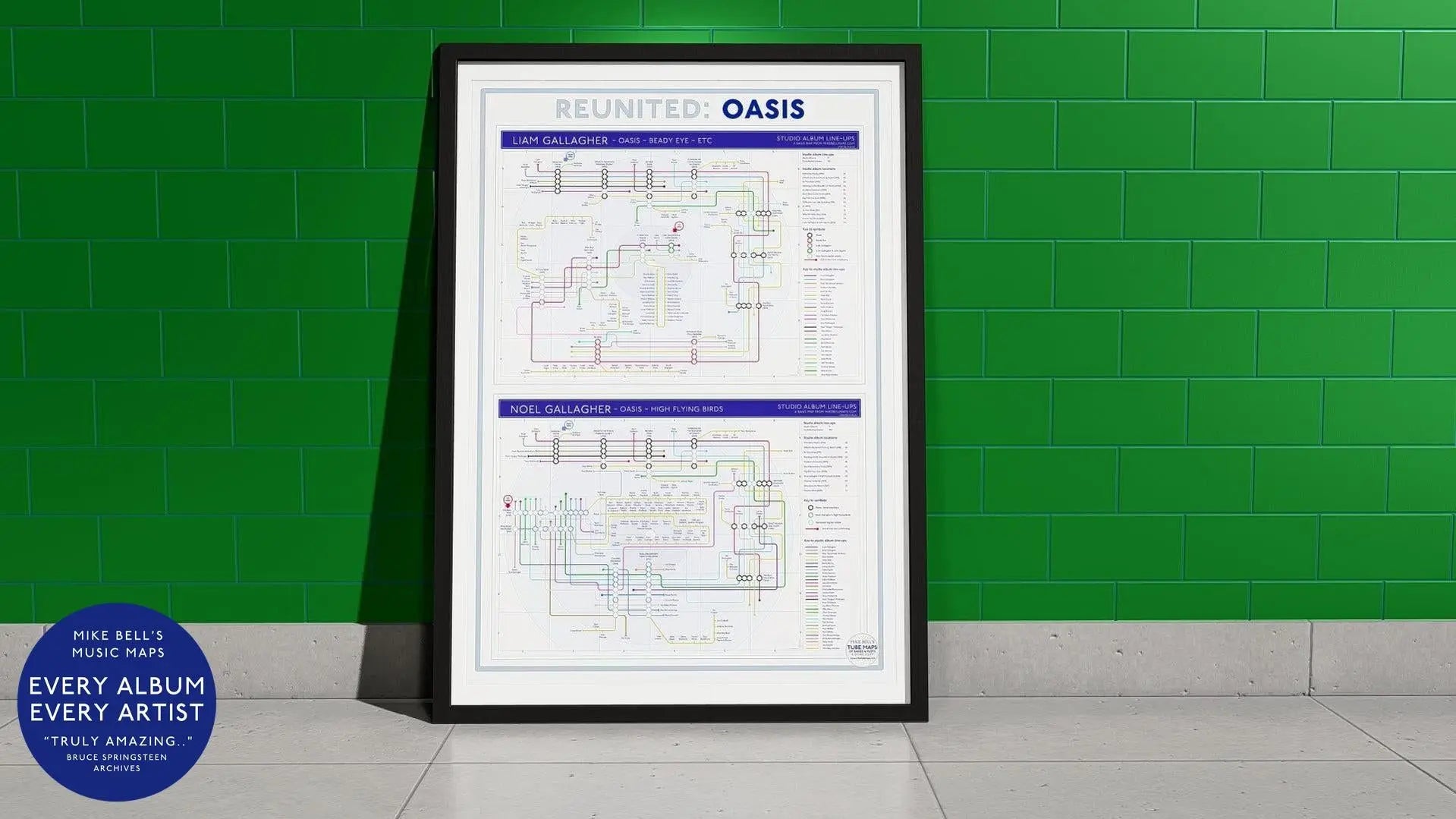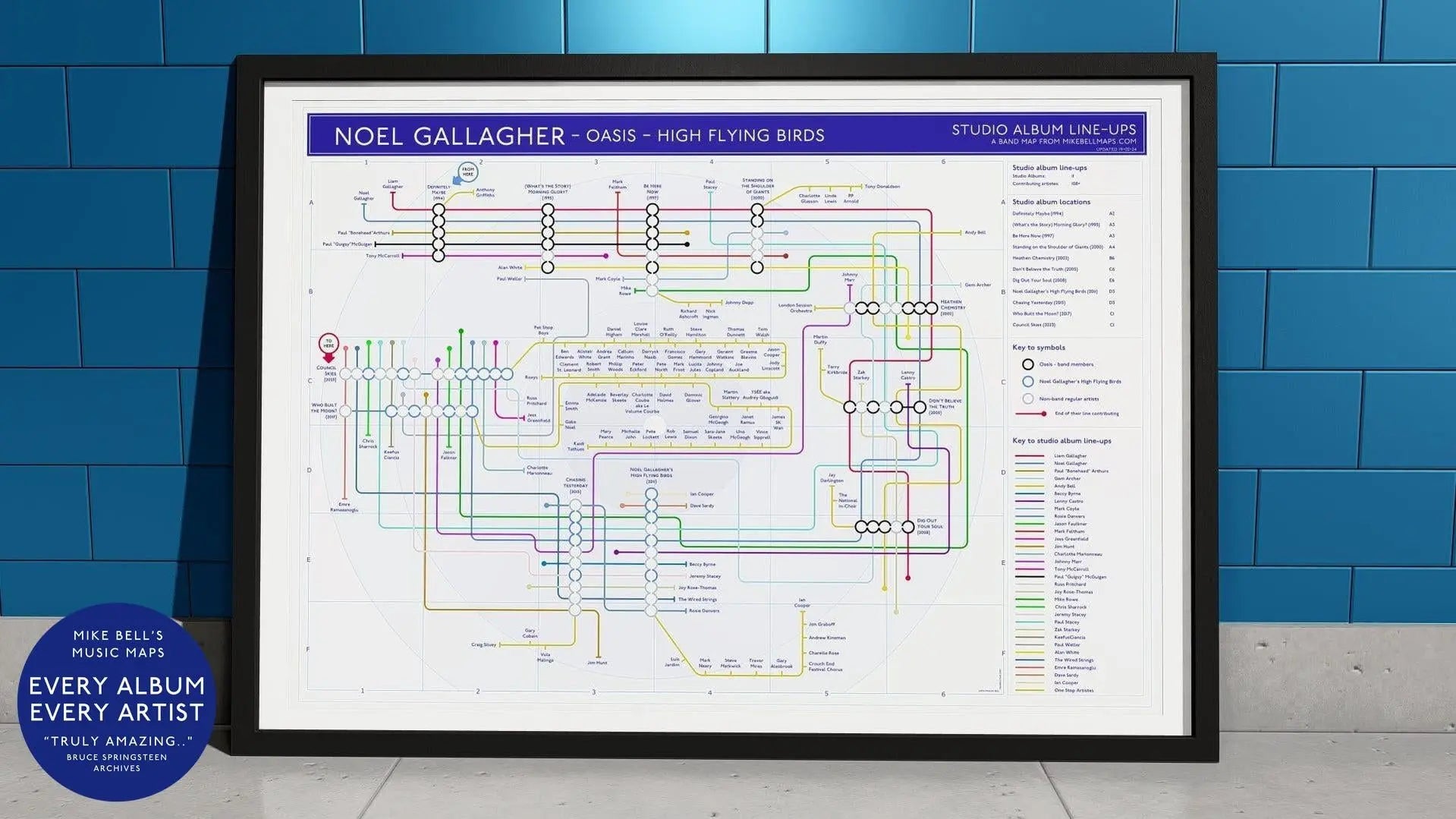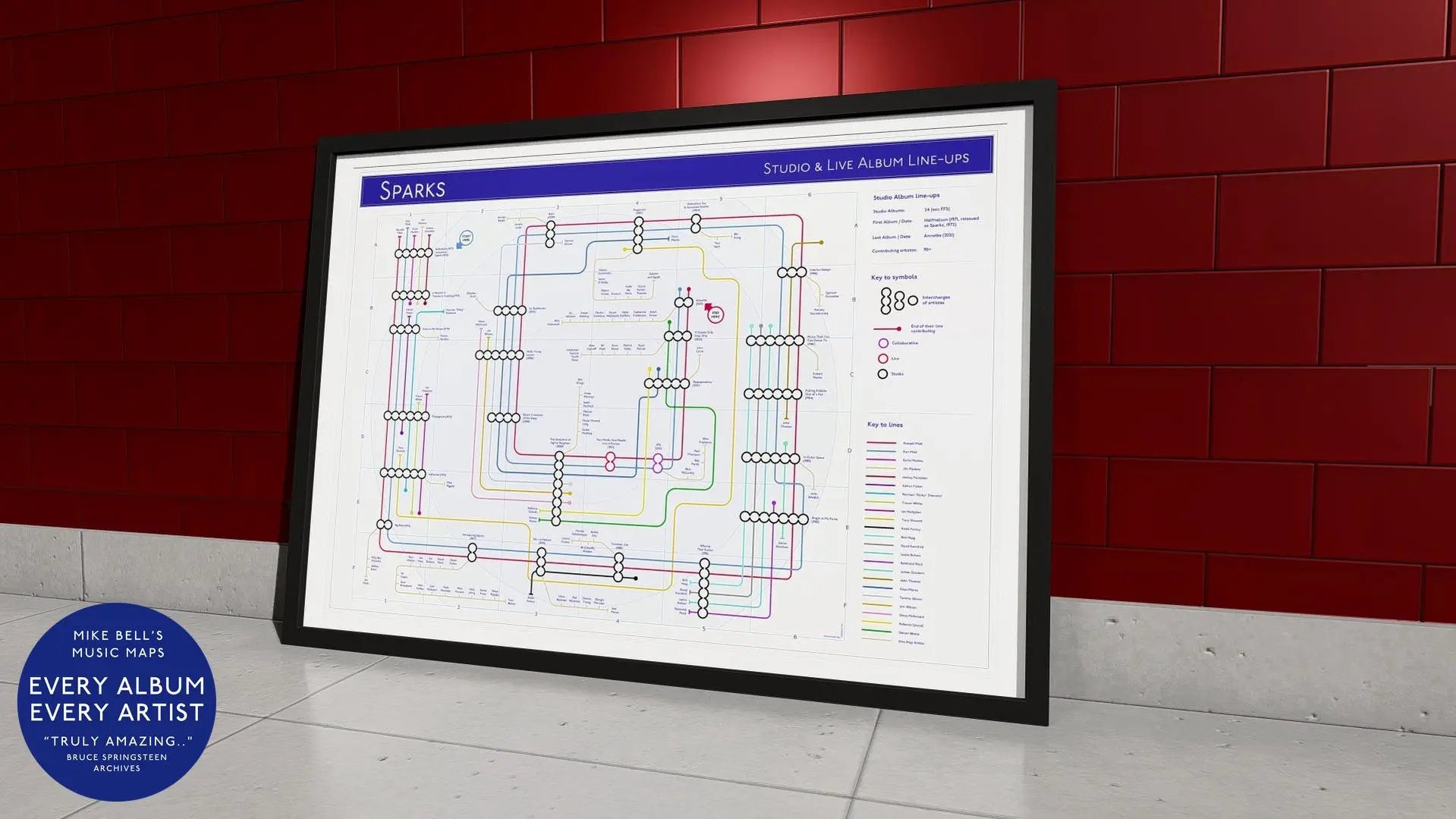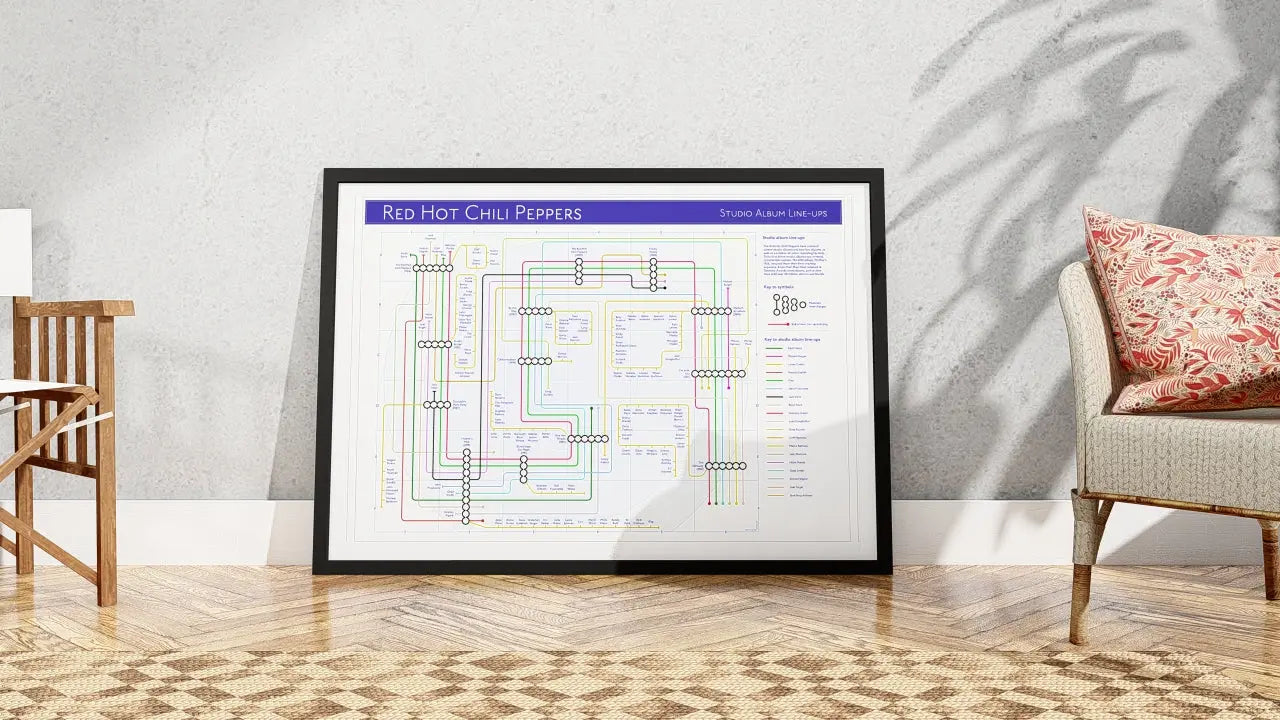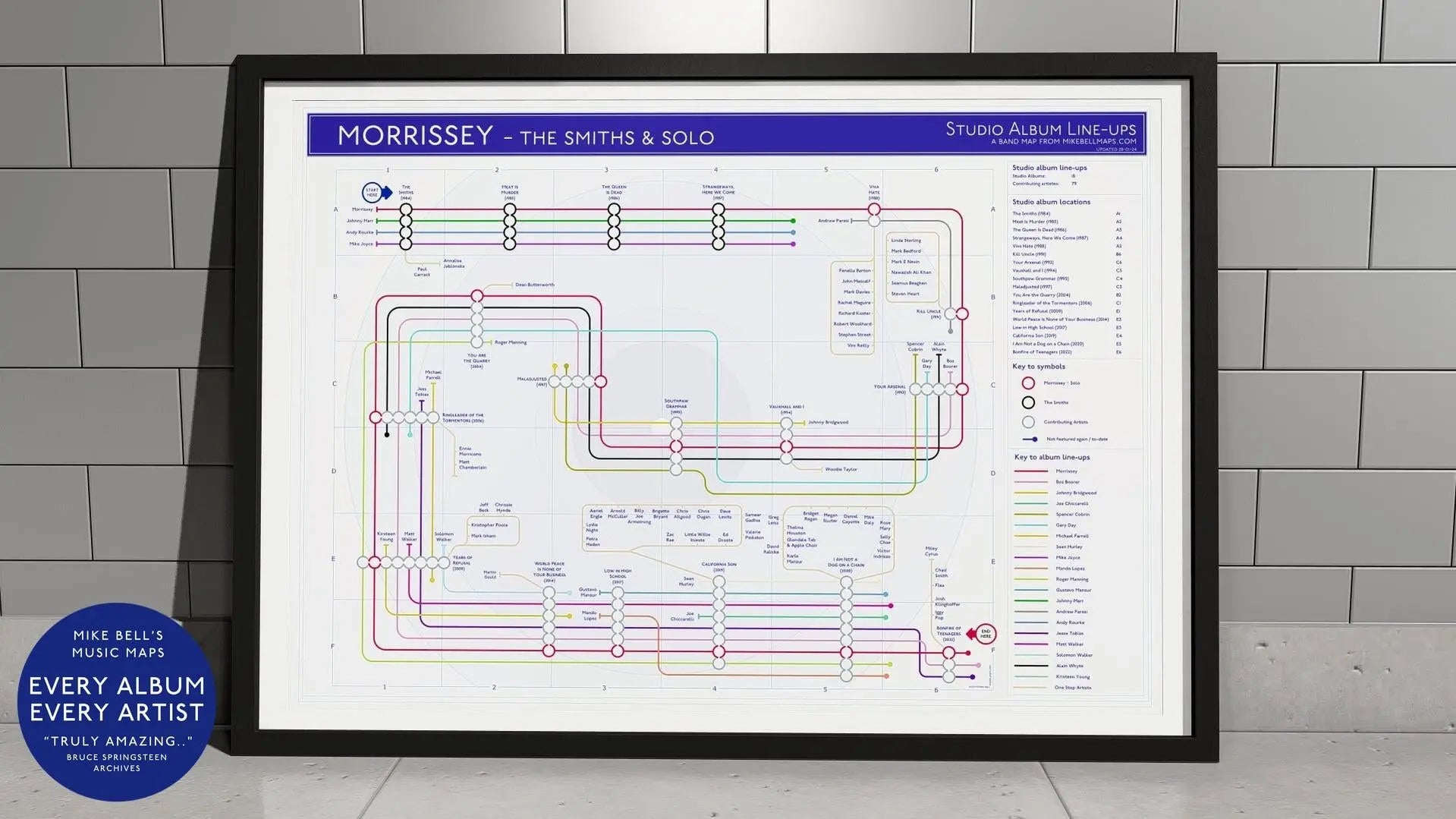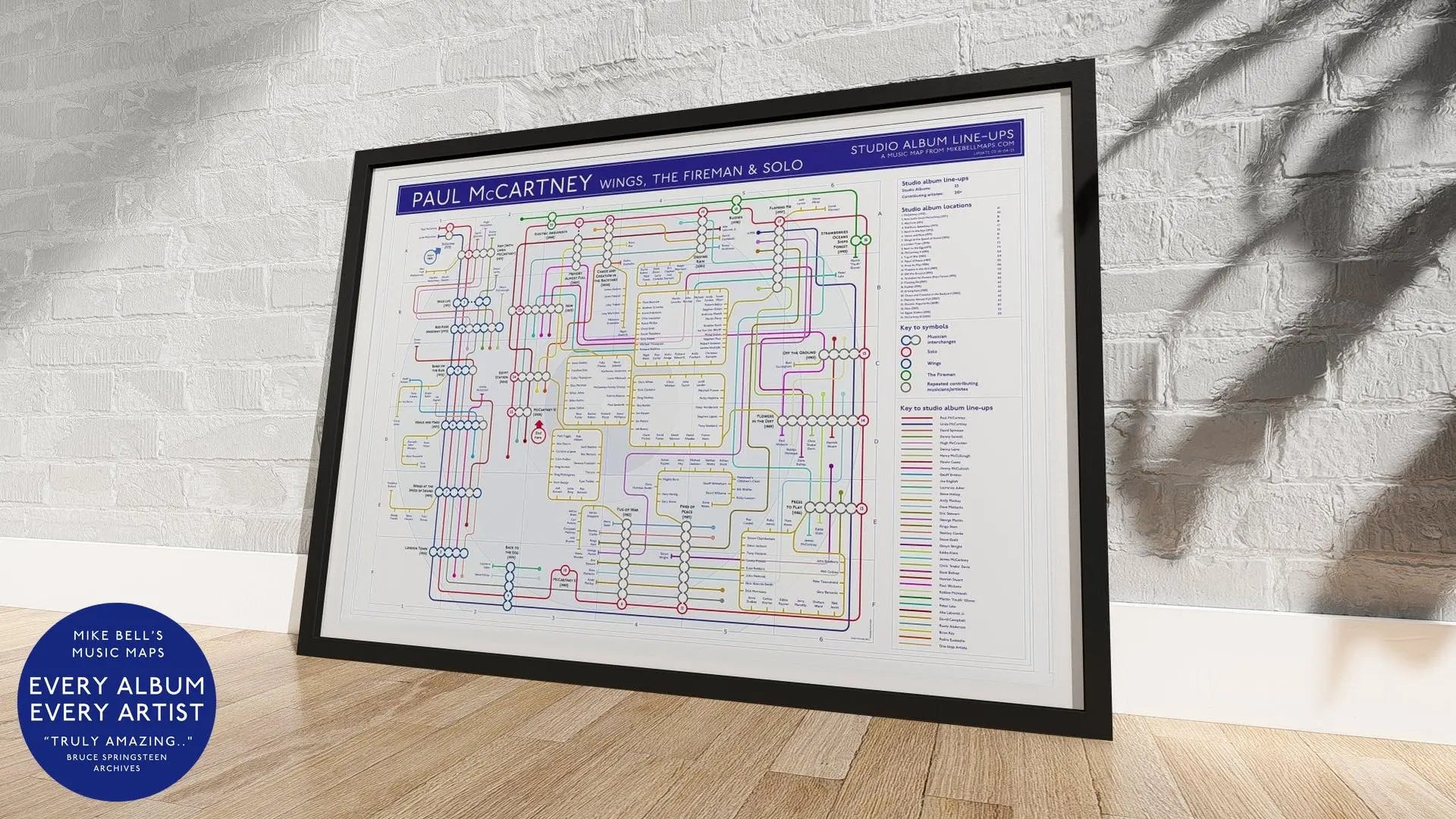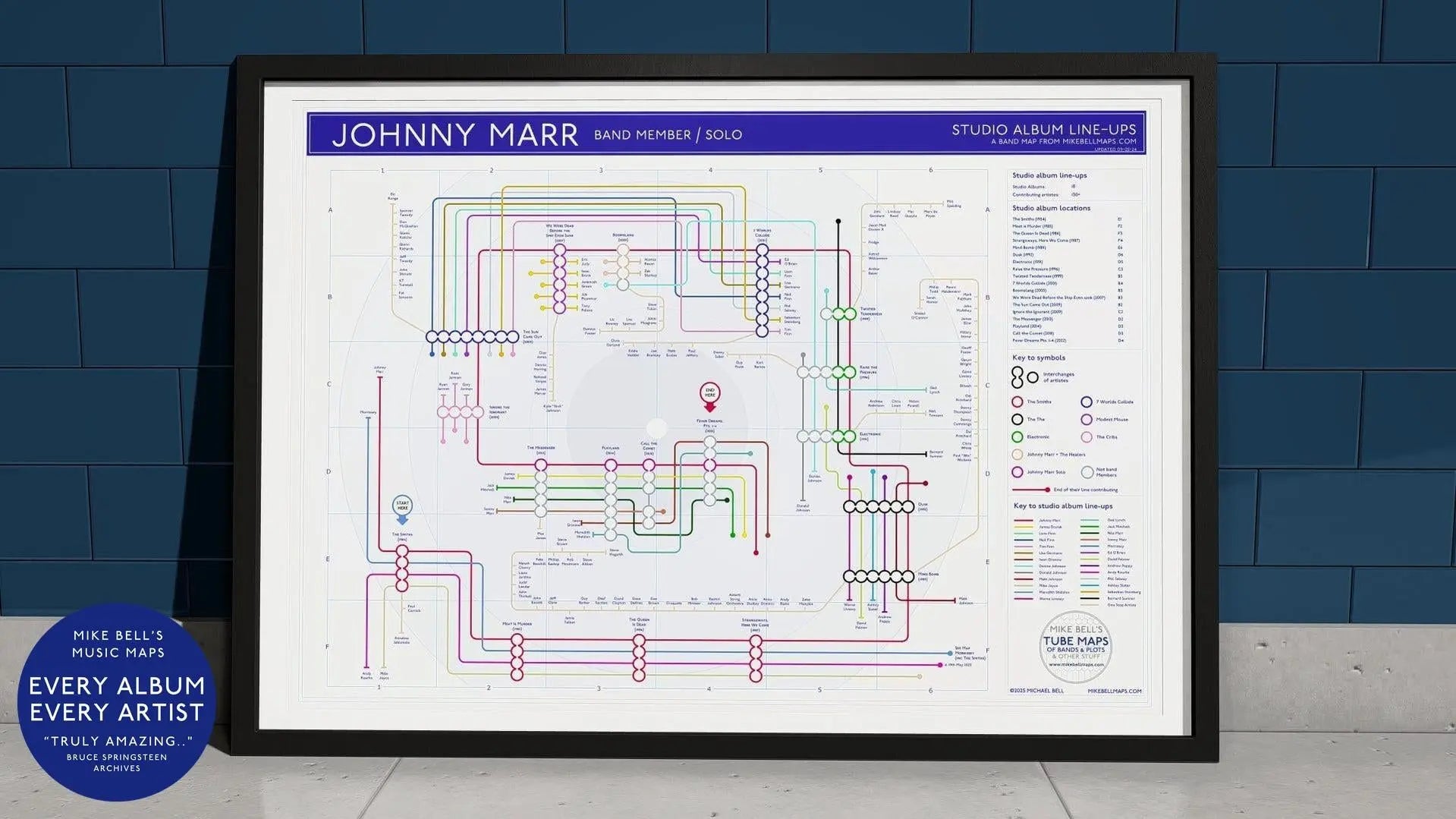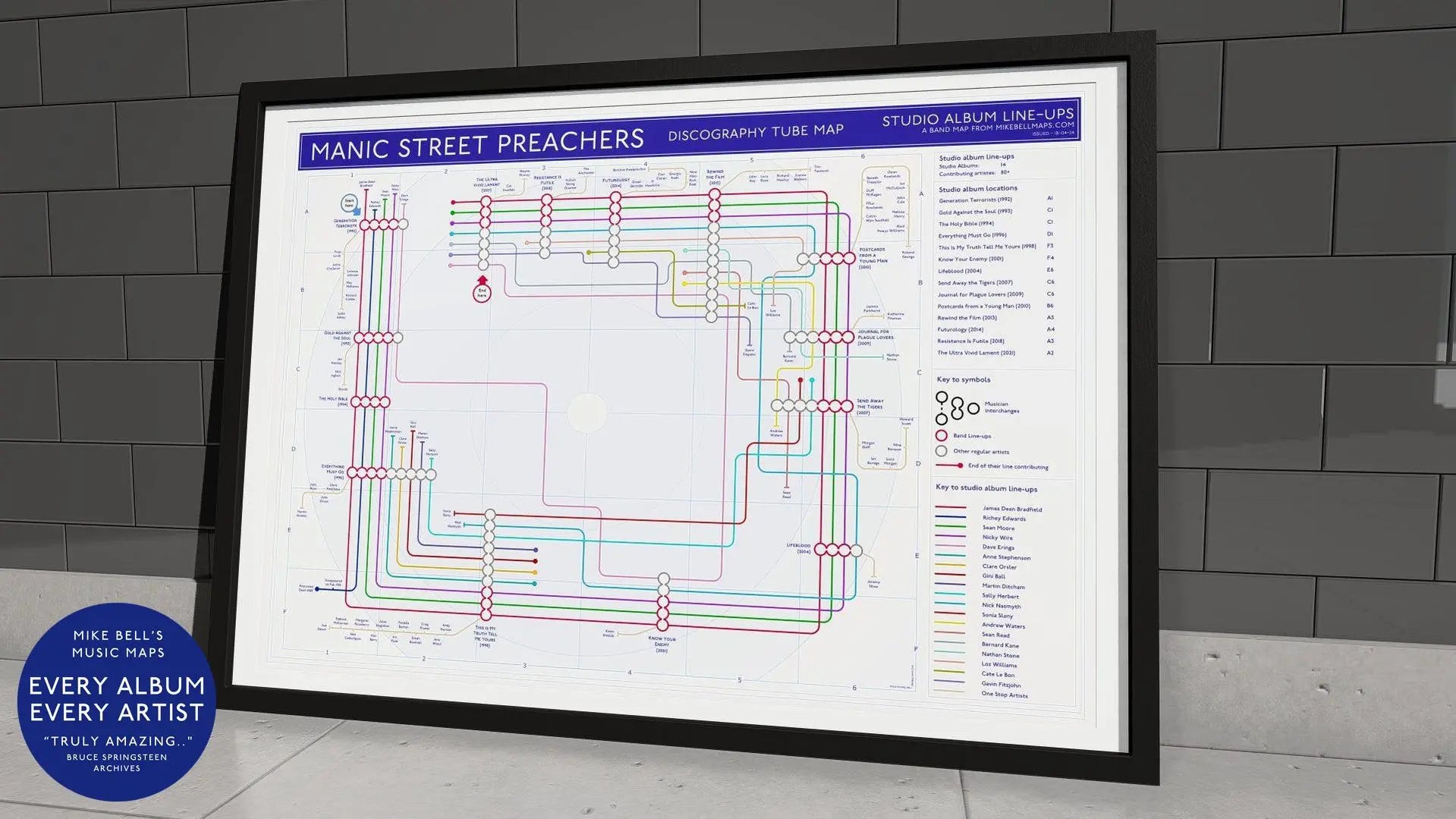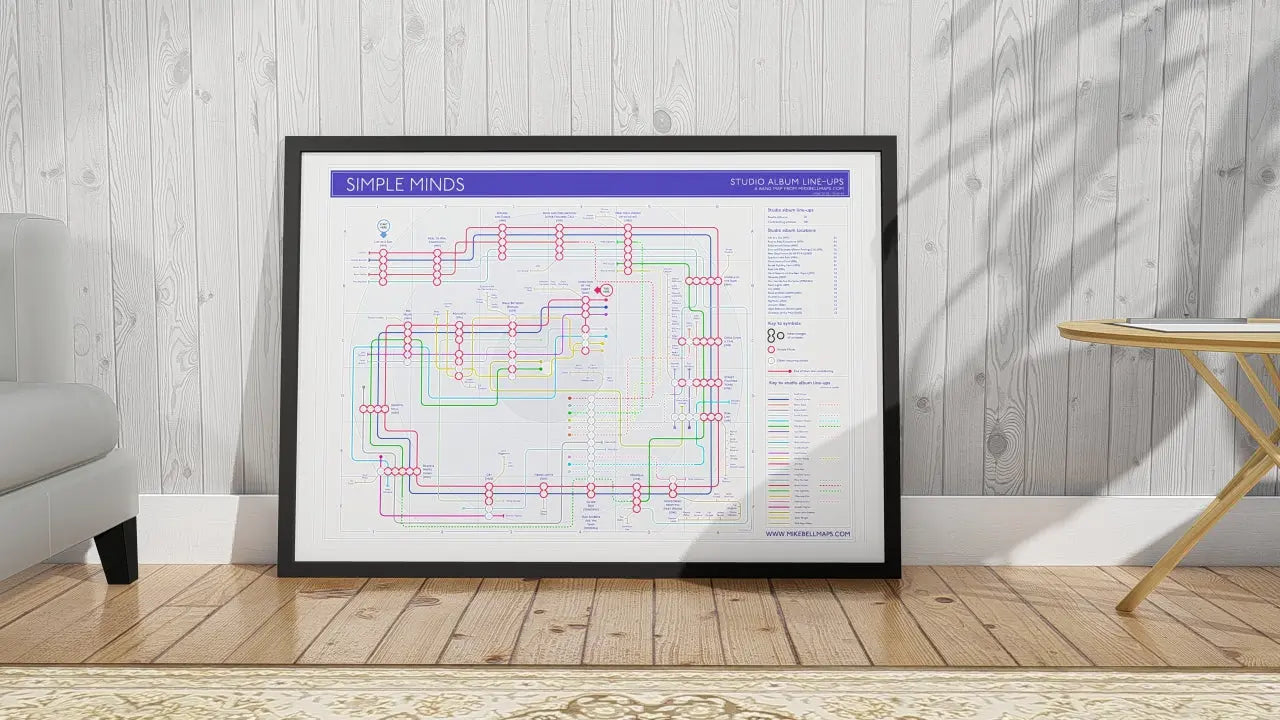
Blondie's Albums in Order
by Mike Bell
·
Blondie's Albums in Order: Few bands like Blondie defined the energy of New York’s late-70s music scene. They were at the heart of CBGB culture, and by the early 80s, they had shaped mainstream sound around them. My map tracks Blondie's albums in order from their 1976 debut to Pollinator in 2017, showing how the band’s line-up evolved as their style transformed.
As the artist behind Mike Bell Maps, I visualise discographies as tube-style network maps. Each album becomes a station, and each credited musician becomes a line across the map. This lets you see how the group changed visually and musically, from punk beginnings to chart-topping synth-pop.
This map includes both Blondie studio albums and Debbie Harry’s solo records.
Blondie's Albums in Order
Here’s a complete list of Blondie’s studio albums in order of release. Each title and every musician credited on each album are represented on my visual map.
| Year Album | Album Title |
|---|---|
| 1976 | Blondie |
| 1977 | Plastic Letters |
| 1978 | Parallel Lines |
| 1979 | Eat to the Beat |
| 1980 | Autoamerican |
| 1982 | The Hunter |
| 1999 | No Exit |
| 2003 | The Curse of Blondie |
| 2011 | Panic of Girls |
| 2014 | Ghosts of Download |
| 2017 | Pollinator |
What the Blondie Map Reveals
The Blondie map shows not just a discography, but a creative journey. With a band that split and later reformed, this format lets you:
- See which musicians recorded on each album
- Track the re-emergence of core members in reunion years
- Understand when key contributors joined or left
- Visualise their stylistic evolution from punk to pop to electronica
It’s a career marked by reinvention, and the map captures that clearly across every studio record.
Key Contributors Across the Albums
Across Blondie’s studio output, several musicians form the core of their creative output. On the map, you’ll see:
- Debbie Harry – vocals on every album
- Chris Stein – guitar, bass, and production
- Clem Burke – drums throughout most of the band’s history
- Jimmy Destri – keyboards and songwriting up to 2003
- Frank Infante, Nigel Harrison, and others from the classic era
- Later-era contributors, including Matt Katz-Bohen and Tommy Kessler
These lines stretch across the map, allowing you to trace every contributor and era of the band’s development.
Evolution of the Sound
The story of Blondie’s albums in order is also a story of genre exploration. Few bands moved as fluidly between musical styles while still sounding unmistakably themselves. My map lets you follow:
- The raw energy of their punk and new wave roots
- Iconic disco and pop moments with Parallel Lines
- Reggae, hip hop, and experimental sounds in the 80s
- The reinvention of Blondie from No Exit onwards
This map visualises everything from CBGB to the charts, from underground to iconic.
Buy the Blondie Albums Music Map
This music map is a high-quality art print, hand-designed and printed on museum-grade stock. It’s ideal for:
- Blondie fans and collectors of 70s/80s music culture
- Design lovers who want data-driven storytelling
- Thoughtful gifts for music fans of any era
View the product here: Blondie Albums Music Map
Each map is individually crafted—not auto-generated—and represents hours of design, research, and detail.
Related Maps to Explore
If you enjoyed this map, you might also like:
- The Smiths Albums Music Map
- Kate Bush Albums Music Map
- REM Albums Music Map
- Taylor Swift Albums Music Map
Explore the complete catalogue: Mike Bell Music Maps Collection
Final Thoughts
Mapping Blondie’s albums in order reveals a band that never stood still. From CBGB stages to international tours, from minimal punk arrangements to lush pop production, their journey is visualised in this music map.
It’s more than a discography—it’s a story you can follow, album by album, line by line.









